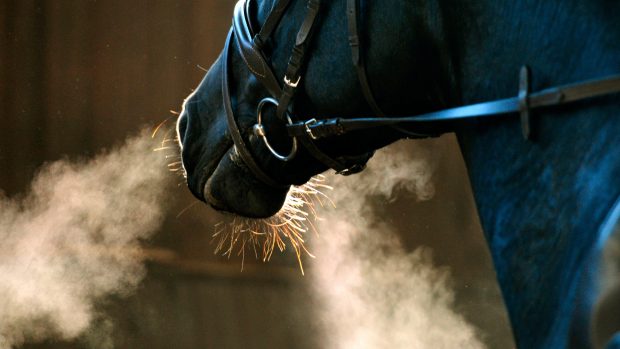More articles on lameness and respiratory problems
Find an equine vet
Lameness
Bone, joint and muscle injuries are the commonest causes of poor performance in dressage horses and show jumpers.
It is not unusual to have to nerve-block horses affected with subtle bilateral lameness in order to prove to their connections that lameness is indeed the problem.
By repeating standard exercise tests before and after, or following treatment with anti-inflammatory drugs like phenylbutazone (bute), it is often possible to prove that removing joint pain not only increases the maximum speed a horse can attain, but also greatly improves its willingness to exercise.
Respiratory problems
Inflammation of the lung and airways — the lower respiratory tract — is common in performance horses.
Vets are yet to quantify the effect of this inflammation on performance during low-intensity exercise, but we know that when infectious outbreaks occur in racing stables, there can be immediate and sometimes long-term effects on performance.
Exercise-induced pulmonary haemorrhage has detrimental effects on race performance, although its role in limiting the performance of other equine athletes, in whom it also occurs, is less certain.
Allergic lung disease causes more problems in older horses.
Although not quantified, it seems logical that low-grade disease could reduce performance either directly or indirectly by adversely affecting the horse’s well-being and its willingness to work.
The upper respiratory tract can also cause problems during exercise.
Displacement of the soft palate (gurgling), laryngeal paralysis (roaring) or collapse of the tissues around the larynx can all obstruct air flow to the lungs and limit the ability to carry oxygen. This forces the horse to slow down or fade quickly.
As affected animals do not always gurgle or roar, viewing the larynx with an endoscope during exercise is the only method for accurate diagnosis.
The heart
In a small percentage of horses the heart and cardiovascular system is the primary cause of poor performance.
Most commonly an abnormality of the heart rhythm, known as atrial fibrillation, is responsible.
Very rarely a severe heart valve leak can also reduce athletic performance but, surprisingly, valve leaks and heart murmurs are not associated with poor performance in most cases.
For the full article on poor performance, see the current issue of Horse & Hound (26 November, ’09)
Looking for more articles on lameness and respiratory problems?
Find an equine vet near you




